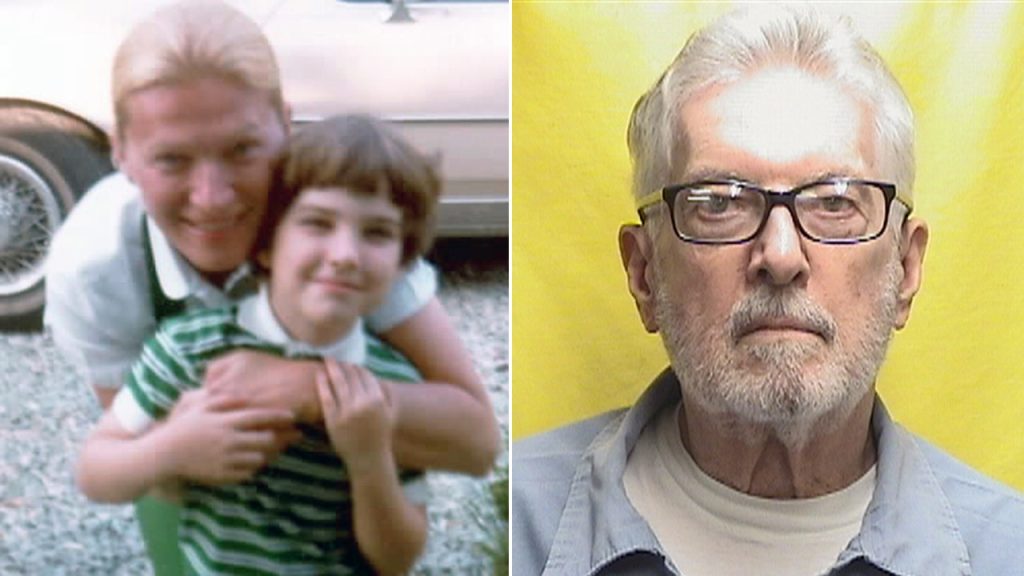The chilling story of Collier Landry began five days after Christmas in 1989, when the 11-year-old heard disturbing sounds from his Ohio home – sounds he later recognized as his mother, Noreen Boyle, being murdered. The memory of those sounds, akin to a body hitting a wall, continues to haunt Landry, now 46. Frozen in fear, he pretended to be asleep, convinced that looking up would have sealed his own fate. The incident marked the beginning of a nightmarish ordeal that would transform his life forever, thrusting him into the center of a media frenzy and a complex legal battle against his own father. Landry’s story, documented in the Oxygen true-crime series “A Plan to Kill,” underscores the devastating impact of violent crimes on the children of perpetrators and highlights the arduous journey toward healing and resilience.
Noreen Boyle is remembered by Landry and his childhood friends as a kind, compassionate woman who instilled in him the value of giving. He recalls her insistence on donating half of his Christmas toys each year to Toys for Tots, a lesson in empathy and gratitude that has stayed with him throughout his life. This image of a nurturing mother contrasts sharply with the turbulent reality of the Boyle household, dominated by the menacing presence of Dr. John Boyle, a prominent osteopath with a history of infidelity and escalating aggression. The marriage, already strained by John’s affairs, deteriorated further after Noreen filed for divorce, culminating in a crescendo of threats and abuse directed at both Noreen and their young son. Landry vividly remembers his father’s ominous pronouncements about starting a new family and leaving them destitute, creating an atmosphere of constant fear and anxiety.
The morning after the murder, Landry discovered his mother’s absence and confronted his father, who fabricated a story about Noreen taking a vacation. Recognizing his father’s deception, Landry bravely contacted his mother’s best friend, Shelly Bowden, setting in motion the investigation that would ultimately expose John Boyle’s crime. Despite initial skepticism from some officers, Captain Dave Messmore recognized the truth in Landry’s account, launching a full-scale investigation into Noreen’s disappearance. Landry, at the tender age of 12, became a pivotal witness, demonstrating remarkable courage in confronting his father and providing crucial testimony that would lead to his conviction. His determination to uncover the truth, even at great personal risk, underscores his deep love for his mother and his unwavering pursuit of justice.
The investigation, fueled by Landry’s testimony and search warrants, led to the grim discovery of Noreen’s body in John’s new Pennsylvania home, buried beneath the basement floor, wrapped in a tarp and plastic. This horrifying revelation confirmed Landry’s worst fears and solidified his resolve to hold his father accountable. At the subsequent trial, Landry’s testimony was instrumental in securing John Boyle’s conviction for aggravated murder and abuse of a corpse. He was sentenced to 20 years to life, a sentence that offered some measure of justice but also left Landry grappling with the profound emotional aftermath of his ordeal. The trauma of witnessing his mother’s murder, testifying against his father, and the subsequent abandonment by both sides of his family left deep scars that continue to shape his life.
In the aftermath of the trial, Landry faced further hardship. Both his maternal and paternal families refused to take him in, leaving him orphaned and alone. His mother’s family cited his resemblance to his father as the reason, while his father’s family reportedly pressured him to recant his testimony. This double rejection compounded the already immense trauma he had experienced. Despite being adopted by a loving family, the feeling of abandonment and isolation persisted, shaping his understanding of family and trust. However, Landry’s resilience shone through. He refused to be defined by his tragic past, focusing instead on building a new life for himself.
Landry ultimately moved to California, adopting his middle name as his surname, and embarking on a successful career as a cinematographer and director. He has also transformed his personal tragedy into a platform for advocacy and healing. He now works as a speaker and coach, helping others navigate similar experiences of loss and trauma. Landry’s story is not just a true-crime narrative, but also a testament to the power of resilience, demonstrating that even in the face of unimaginable adversity, healing and growth are possible. He has dedicated himself to sharing his experience, offering hope and support to those who have suffered similar losses, and inspiring others to find strength in their vulnerability.











